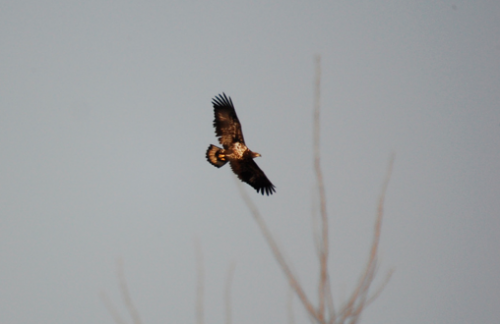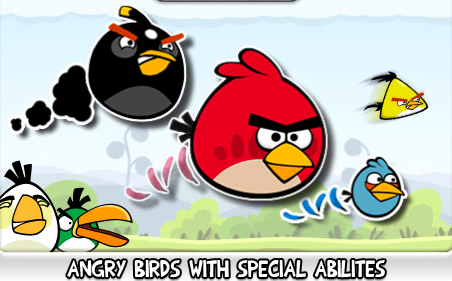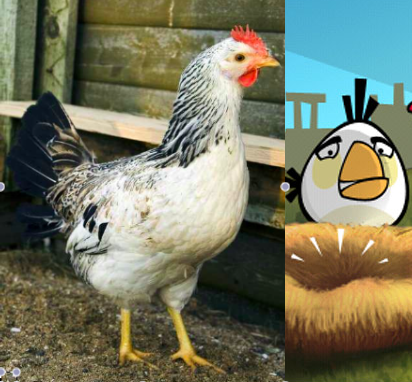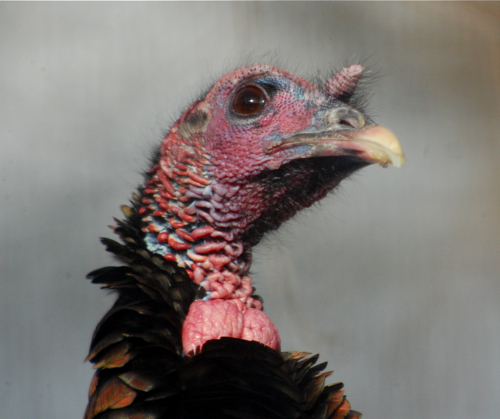I get books sent to me all the time and the words, "innovative" and "revolutionary" and "amazing" get tossed around. The books are good, but rarely live up to the hype.
Richard Crossley's new Crossley ID Guide to Eastern Birds is a guide lives up to those words. This book is going to be talked about A LOT. Some people are going to dislike this book (there are rumors of "well respected birders" refusing to review it). Some are going to love it. The bottom line is that Mr. Crossley took a huge chance and this is a book that has to be seen to be believed.
I've heard of this book coming down the pike for months. When I saw the first few pages, I thought, "Ahhhhhhhh, A.D.D. birding! Stop the insanity!" Here's why:

This book assaults you visually. The above is the page for the osprey--birds are everywhere, coming from every direction, looking in every direction--everywhere you look: osprey! Ahhhhhhhhhh! I think we are used the very orderly and tidy designs of Sibley and the National Geographic Guide that the Crossley Guide seems almost too intense. But I do like what he is trying to communicate here. He has a photo of the typical habitat that one might find an osprey in and then tries to show you every possible angle at which you could id the birds. It's almost as if this book is the "missing link" between illustrated guides and what I see the future being of video bird guides on smart phones.

It's as if the author went out of his way to make his guide as different as possible. He uses photos of birds in the beginning to show you the different parts of the bird, but rather than using "pretty shots" he goes for more realistic, like using a house finch with conjunctivitis (ew).Despite one really gross (yet realistic and accurate) photo, the photos of birds are very useful tools for showing anatomy.

Here are the pages for common yellowthroat and hooded warbler. On the one hand, I really like how he gives you suggestions for the type of habitat that you mind the birds. However, I could see young birders getting confused. For example, the habitat shown for yellowthroat is the type of habitat I would expect to find them if I were along the coast in Cape May, NJ but not the type of plants I find them lurking in if I were birding in Minnesota. Also, since each bird is in sort of a flock photo, will a new birder think that this is how you find the birds in the wild, are they always in flocks?

I do really like this book, it's interactive, it challenges you to think of birds in their habitat and it gives you so many ways to prep for how you might observe the birds in the wild. Many of the pages can serve as a quiz to help you age and sex each species. For newer birders, I would say to remember that the habitats are just suggestions...you're not always going to see a northern goshawk just when there's a rainbow.
I think this book is best used for study before going out in the field--and that's another thing, this book will most likely not travel with you out in the field. According to my kitchen scale, it's three and a half pounds--three quarters of a pound heavier than Sibley and this guide is only for the eastern region of the US--not a complete North American guide. Unless you are trying to burn some serious calories out in the field, leave it at home.
One thing that might drive a new birder crazy is the use of 4 letter banding codes to describe the birds. Each photo takes up so much space on the page, the text is minimal. Those familiar with bird banding would easily understand that in describing the finer points of ID for the alder flycatcher: "In many respects, intermediate between LEFL and WIFL. Larger than LEFL with longer and broader tail."
If you know the banding codes, that sentence makes sense. If you don't, figuring that info out might be tedious (but in the long run worth it).
This book is definitely worth having your bookshelf.
Word is that Crossley will be working on a western version and a British version too. Oh and speaking of which, I did see on the bird jobs listerv that he's looking for an assistant, so if you'd like to work for this author and help:
CROSSLEY BOOKS has a unique employment opportunity, in Cape May, NJ for a highly motivated individual in a very fast-paced environment. We are presently working on a series of innovative bird books with the first, The Crossley ID Guide being released in Feb 2011. We are looking for a hard working and creative individual. The most important aspect of the position will be to help the author create and edit texts for these books and other publications. This will involve working closely with the author but also requires self-motivation and independent duties. Excellent writing skills are essential along with creativity. Other tasks will be varied and wide-ranging. Duties may include dictation, answering e-mails, Facebook, Twitter, media contacts and all other office support. This is a full-time position, starting immediately. Good knowledge of birds is a big advantage. All resumes and inquiries can be forwarded directly to our email address: (EM: thebrit1 AT verizon.net)


 [Note from NBB: I've fixed the reverb problem and reuploaded the audio file. Thanks for bearing with us while we figure out the technical end of things.]
[Note from NBB: I've fixed the reverb problem and reuploaded the audio file. Thanks for bearing with us while we figure out the technical end of things.] There are times, like when I'm sitting in
There are times, like when I'm sitting in 












 Around the holidays, I finally downloaded
Around the holidays, I finally downloaded 







